Forex Crunch USD/CAD Outlook – July 12-16 |
- USD/CAD Outlook – July 12-16
- GBP/USD Outlook – July 12-16
- NZD/USD Outlook – July 12-16
- AUD/USD Outlook – July 12-16
- EUR/USD Outlook – July 12-16
| Posted: 11 Jul 2010 04:01 AM PDT The Canadian dollar expects 4 events in the upcoming week, after rising against the greenback. Here’s an outlook for these events and an updated technical analysis for USD/CAD. USD/CAD daily chart with support and resistance lines. Click to enlarge: Excellent employment figures on Friday gave a huge boost to the loonie. It seems that the Canadian economy is doing well, regardless of oil prices. Let’s start:
USD/CAD Technical Analysis At the beginning of the week, USD/CAD retested the 1.0680 resistance line that it already encountered in the previous week. Later on, it fell below 1.0550 and made a break under 1.04 on Friday to close at 1.0335. The pair is back to the 1.02 to 1.04 range. Note that some lines changed since last week’s outlook. 1.04 was the bottom line of the long-term 1.04 to 1.0750 range, and is now a resistance line. Above, 1.0550 is a minor line of resistance, working as such in recent months. A more important line is 1.0680, that proved its strength in the past two weeks. Above, 1.0750 is the next strong line, last tested in May. Also 1.0.850 was tested in May. Both lines were also significant in 2009. Looking down, 1.02 provides immediate support. This was the 2009 low. Below, 1.01 provides minor support. 1.01 worked as a resistance line after the pair hit parity in April. Below, the magic parity line provides support. In case the pair falls below 1, the next support line is found at 0.98 and then 0.97. I remain bearish on USD/CAD. As seen in the employment figures, the Canadian economy is doing great, and this should be reflected in USD/CAD as well. Further reading:
Ready to connect with real Forex traders? Currensee is the first Forex trading social network. |
| Posted: 11 Jul 2010 01:49 AM PDT A busy week expects cable traders: inflation, employment and Final GDP are part of the events that will shake the Pound this week. Here’s an outlook for the British events and an updated technical analysis for GBP/USD. GBP/USD daily chart with support and resistance lines. Click to enlarge: In the past week, the Pound traded in a tight range, and didn’t fall during most of the week, despite many bad economic indicators that were released in the UK. The fall began only on Friday. Will it continue? Let’s start:
GBP/USD Technical Analysis Tight range trading characterized the Pound’s week. An almost perfect 160 pip range was seen – between 1.5080 and 1.5240. Eventually, the currency fell and closed at 1.5060, lower than the range, but still above the 1.5050 support line mentioned in last week’s outlook. The pair’s current range is between 1.5050 and the minor resistance line of 1.5130. Much stronger support is found at 1.5240, the highest level seen since the beginning of May. Above, 1.5350 worked as a pivotal line in April, and is now a resistance line. Higher, 1.5530 is the highest level since the beginning of the year, and worked as stubborn resistance line during many days in April. Higher, 1.5833 provided support before the pair collapsed, and later worked as a resistance line. Looking down, 1.4870 supported the pair in its recent climb upwards and is a strong support line. Further below, 1.4780 was a strong support line in March and April, and recently worked as resistance. A big collapse of the pair will send it back to 1.4610, last seen at the beginning of June, and then 1.45. The year-to-date low of 1.4227 provides support way down. I turn bearish on GBP/USD. The recent weakness of the British economy and the decreasing chances of a rate hike can release the hot air out of the Pound, sending it down. Further reading:
Ready to connect with real Forex traders? Currensee is the first Forex trading social network. |
| Posted: 11 Jul 2010 12:15 AM PDT Retail sales and the all-important CPI are the major events that will rock the kiwi this week. Here’s an outlook for the events in New Zealand, and an updated technical analysis for NZD/USD. NZD/USD daily chart with support and resistance lines. Click to enlarge: The kiwi advanced after crossing the round number of 0.70. It’s further steps depend now on inflation, which will determine the outcome of the next rate decision. Let’s start:
NZD/USD Technical Analysis The kiwi continued struggling with the 0.6910 line at the beginning of the week, but then made a strong move upwards and broke above the round number of 0.70 to close just under 0.71. NZD/USD’s range is between the round support line of 0.70 and the next resistance line of 0.7160, which was a stubborn top during June. The next line of resistance is at 0.72, which capped the kiwi in the past. Higher, May’s highs of 0.7325 provide the next strong resistance line. This was an area of resistance also in December. The last line of resistance is at 0.7440, which was a peak at the beginning of the year. Looking down below 0.70, 0.6910 provides the next support line. It has been a pivotal line recently. Lower, 0.68 provides support very recently and also in February, and is the next line of support. There are many lines below, but the most notable one is 0.6560, which was the year-to-date low. I remain bullish on the kiwi. With a stable, growing economy, and with a cycle of rate hikes that already began, it’s likely to gradually rise. Further reading:
Ready to connect with real Forex traders? Currensee is the first Forex trading social network. |
| Posted: 10 Jul 2010 06:30 PM PDT A variety of Australian releases and one Chinese release will move the Aussie in the upcoming week. Here’s an outlook for the Australian events, and an updated technical analysis for AUD/USD, now in higher ground. AUD/USD daily chart with support and resistance lines. Click to enlarge: The Australian economy enjoys a bubbling job market. The fresh figures came out significantly better than expected, and this gave a big boost to AUD/USD. Will this continue? Let’s start:
AUD/USD Technical Analysis The Aussie had a bad start to the week, testing the 0.8315 support line, which it also tested in the previous week. It then began a rally during which it broke many resistance lines and eventually bounced at the resistance line 0f 0.88. The Aussie is now in a tight range between 0.8735 (December’s low) and the round number of 0.88 which it just tested. Note that some lines have changed since last week’s outlook. Below 0.8735, the next support line is 0.8567, which served as a strong support line during many months in the past year, and recently worked as a pivotal line. Below, 0.8505 is a minor support line. Lower, 0.8390 worked as a minor support line in recent months. It’s followed by 0.8315, which was a double bottom in the past two weeks – this makes it a strong line of support now. Even lower, 0.8240 is an old line of resistance that now serves as a support line, and its followed by the year-to-date low of 0.8066. Looking up above 0.88, the next line of resistance is the round number of 0.90, which was tested in March and in May. Higher, 0.9327 is a very strong line of resistance which held the Aussie back lots of times in the past year. Even higher, 0.94 was the 2009 high and its followed by the round number of 0.95, but they’re still far. I remain bullish on the Aussie. Once again, we’ve seen that the Australia is doing great – the economy gained lots of jobs. We’ll now probably see that Australia’s main trade partner, China, is also doing well, and this is likely to provide further strength for the Aussie. Further reading:
Ready to connect with real Forex traders? Currensee is the first Forex trading social network. |
| Posted: 10 Jul 2010 04:30 PM PDT The German ZEW Economic Sentiment is the major European event this week. Will it end the Euro rally? Here’s an outlook for the European events and an updated technical analysis for EUR/USD. EUR/USD daily chart with support and resistance lines. Click to enlarge: Riding on weak economic data from the US, EUR/USD edged up to new highs. The big question is if it’s sustainable. We didn’t get many headlines about the debt crisis recently, so the indicators have a bigger role. Let’s start:
EUR/USD Technical Analysis The Euro gradually went up during the week, but struggled to make a convincing break above 1.2670. It did reach 1.2720 (a new line that was added on last week’s outlook), but eventually closed at 1.2670. Looking up above the past week’s peak of 1.2720, EUR/USD will find last year’s line of support at 1.2880 as its next resistance line. Above, 1.3110 was a strong support line before the collapse of the pair, and now provides resistance. The next support line that now turned into a resistance line is 1.3267, still far away for now. Looking down, 1.2608 serves as an immediate line of support after working well in the past week. It’s followed by 1.2480, which is already a strong line of support. Below, 1.2395 is the next minor support line, working temporarily as a resistance line in mid June. Lower, 1.2250 worked as a support line and is still relevant. The strongest support line is 1.2150. This worked as a support line before the Euro collapsed under 1.20, and serving as the bouncing spot before the recent rally. A drop below this line will open the road to a collapse. I return to the bearish sentiment on the Euro. EUR/USD made a strong correction, and is leaning towards the bottom of the uptrend channel. The debt issues in Europe are far from over, and American figures should show the difference once again, resuming the downtrend. This pair receives many great reviews on the web. Here are my picks:
Further reading:
Ready to connect with real Forex traders? Currensee is the first Forex trading social network. |
| You are subscribed to email updates from Forex Crunch To stop receiving these emails, you may unsubscribe now. | Email delivery powered by Google |
| Google Inc., 20 West Kinzie, Chicago IL USA 60610 | |

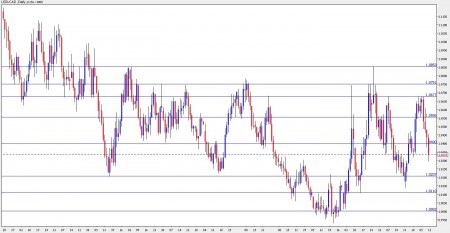
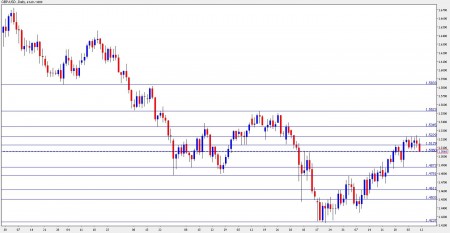
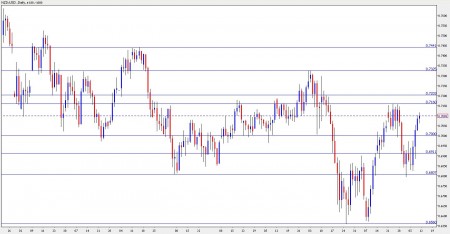
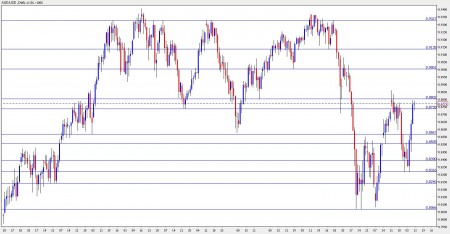
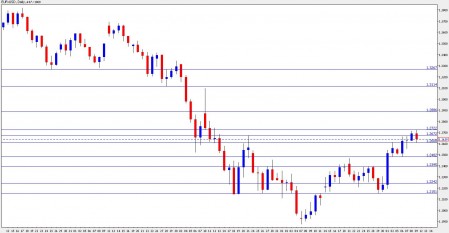
No comments:
Post a Comment